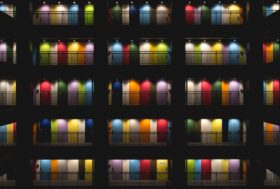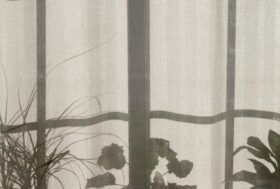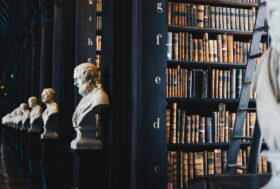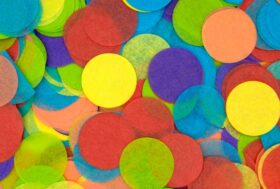FROM THE EDITOR
Some years ago now, my primary school dance club chose Sylvia Plath’s poem ‘Mushrooms’ (1962) to perform in a Medway town arts festival at Chatham dockyard. We read and discussed the text, improvised our interpretation of mushrooms ‘overnight, very whitely, discreetly’ and of girls (and boys) taking ‘hold on the loam’ to ‘acquire the air’. We also listened to music that might suit, engaged a group to offer an accompanying reading and added a repeating ostinato during the second half – ‘our foot’s in the door’… ‘our foot’s in the door’. Those were the days. Long days of creativity, expressive freedom, professional artistry and agency, and time and space to explore possibilities within and beyond the curriculum. Or were they? Perhaps I am simply wearing rose-tinted spectacles, my vision blurred by the intervening years of endless pendulum swings. During the period of the Creative Partnerships initiative, for instance, creativity and the arts were placed centre-stage; more recently, however, they have been pushed firmly backstage by the standards agenda. In England in particular, our performative culture has had serious consequences for arts education, which has positioned some educators as ‘perfectly voiceless’ (to borrow more of Plath’s poem) – obliged to accept the exclusion of arts subjects in the English Baccalaureate and diminished arts provision in primary schools.
Despite this, educators and researchers committed to the arts, to creativity and to cultural learning have continued to engage imaginatively, ask questions, explore issues and take risks. They recognise the intrinsic value of the arts and the rich contribution of creativity and cultural education to the human race and, in particular, to our social and emotional wellbeing. Individually and collectively, both onstage and off, these professionals continue to ‘widen the crannies’ and ‘shoulder through holes’ (Plath again), making space for serious play and creative learning.
Now the pendulum is swinging again, as evidenced in the government’s investment in music hubs and the recent Ofsted framework. This more open direction of travel will surely be supported by the Durham Commission on creativity and cultural education, due out any day. A collaboration between Arts Council England and Durham University, the commission aims to examine the benefits of a creative education for young people from birth to 25, with particular reference to economic growth, skills and social mobility; community identity and social engagement; and personal fulfilment and wellbeing.
So in this editorial, whilst acknowledging the challenging stories from backstage, I am avoiding rehearsing these. Instead, drawing on my experience of teaching and researching creativity, I want to explore some of the resonating themes in this inspiring issue of Impact. You will find your own, no doubt, but for me the key threads orient around creative pedagogy, teachers as artists and collaborations for learning.
Creative pedagogy
Whilst creativity is notoriously difficult to define, it is widely recognised that it encompasses responding to problems, making connections, inventing and reinventing, and flexing one’s imaginative muscles in all aspects of learning and life. In essence a novel response or habit (Sternberg, 2010), it can, like other habits or mindsets, be both enabled and constrained by the kind of curriculum on offer and the pedagogic practice employed. In light of the forthcoming Programme for International Student Assessment (PISA) of young people’s creative thinking, due to be undertaken by 15-year-olds in 2021, creative pedagogy is likely to receive increased attention in both policy and practice over the next few years. Whilst not confined to the arts, such pedagogy is often evidenced within arts education when young people are invited to engage imaginatively and physically in drama, dance and music, and to generate and critically evaluate ideas as writers, storytellers and visual artists. Recently, through a systematic review of the international literature in this area, spanning 1990 to 2018, a colleague and I worked to understand what characterises creative pedagogies in the years of formal schooling. We identified seven characteristics, namely: generating and exploring ideas; co-constructing and collaborating; encouraging autonomy and agency; problem-solving; playfulness; risk-taking; and teacher creativity (Cremin and Chappell, forthcoming).
Many of the practitioner and research papers across all four sections of this issue document these characteristics in action, as teachers seek to nurture young people’s creativity, often unlocking additional benefits as their students learn in and through the arts. The papers remind us to revisit the value and purpose of the arts and to recognise the connections between the arts and personal, social and emotional development, confidence, resilience and communication. Whilst there is a lack of concrete evidence that arts engagement enriches academic achievement (See and Kokotsaki, 2016), judging the merits of arts education solely on academic outcomes is limiting. Arts education has value for its own sake, for its contribution to the human experience and to cultural learning, as the OECD acknowledge (Winner et al., 2013). Nonetheless, the EEF/RSA Learning about Culture partnership programme, which is investigating the role that cultural learning plays in improving children’s educational outcomes, is one to watch. It aims not only to build a stronger evidence base around cultural learning but also to improve practitioner effectiveness by collecting, understanding and using such evidence to improve practice. Reports on the five programmes are due in 2020.
Teachers as artists
In our review, teachers’ creativity emerged as a characteristic of creative pedagogical practice, with evidence of teachers being innovative, investing time in discussion and sharing their pleasure in creative processes. Such professionals not only recognise, value and exercise their own creativity but also seek to promote creativity in others. However, support will be needed to help teachers develop as artistically engaged, research-informed curriculum developers. For primary educators in particular, tensions persist, in part because their own confidence in the arts and their identities as creative educators have been reduced and reframed by a narrow focus on literacy and numeracy. Opportunities for sustained professional development in the arts can valuably reposition teachers and headteachers as learners and researchers, as several papers in this issue demonstrate. With access to specialist expertise, and the chance to engage deeply and deconstruct the experience, educators can be supported to explore their beliefs about the arts, creativity and the curriculum. This in turn can prompt them to participate authentically and respond imaginatively to young people’s questions and interests, adapting and refining their approaches in the light of their students’ learning.
The value of teachers’ sharing the satisfaction they derive through cultural engagement and learning about the arts merits further attention. Working alongside young people as language artists, for example, as fellow readers and writers and co-producers of diverse texts, teachers will be taking risks too. In sharing their literate identities and vulnerabilities, and bringing their own knowledge and understanding – drawn from life experience and various cultural networks – into the classroom, they will be positioning themselves as learners and engaged role models. Such shared learning spaces, characterised by reciprocity and interaction, enable teachers to enrich their understanding of the cultural, linguistic and social assets that young people bring from home. This in turn can support teacher-artists in developing responsive and creative approaches that tap into young people’s ‘funds of knowledge’ (Moll et al., 1992).
Collaborations for learning
Artistically engaged teachers, as many of the papers in sections two and three indicate, often act spontaneously and with others, tempering the planned with the lived curriculum as they collaborate. Teachers’ engagement in various forms of partnership is another strong thread woven through this issue of Impact and is also profiled in section four. Collaborative endeavours with arts partners, university lecturers, student teachers and staff from cultural organisations have considerable potential for the learning of all involved. Rich and diverse models of sustained partnerships exist, with young people being offered regular visits to museums, galleries or performance art venues, or opportunities to work with artists in their schools or local communities, often in order to construct an end-product of some kind, potentially a communal celebration of their learning.
Such dynamic collaborations benefit from an openness to learn from all partners, an enquiry or focused study frame and considerable time – for careful planning, learning, development and reflection, such that each partner’s particular expertise is recognised and deployed effectively. Critically, collaborators need to pay close attention to what is happening in the classroom, such that the consequences for young people’s learning and development are documented and teaching is adapted accordingly. The Paul Hamlyn Foundation’s Teacher Development Fund is a model of its kind in this area, focused on improving children’s learning in and through the arts, particularly for young people experiencing disadvantage. It seeks to make use of specialist arts expertise in ways that build sustainable capacity and enable schools and teachers to embed learning through the arts in the curriculum.
Read on
As the academic year stretches before us and we review our plans, I hope that we can each make the time, regardless of our roles, subject specialisms or personal passions, to revisit the place of the arts, creativity and cultural learning in education. As the papers in this issue of Impact (and in the packed online edition), indicate, there is already considerable evidence of educators, artists, researchers and young people widening crannies and shouldering through holes. Supported by these intriguing research reports, case studies and perspectives we can surely reflect on, debate and ponder possible ways forward for teaching and research, for shaping rich curricula and creative practice that engages us all.
References
Cremin T and Chappell K (forthcoming) Creative pedagogies: A systematic review. Research Papers in Education.
Moll L, Amanti C, Neff D et al. (1992) Funds of knowledge for teaching: Using a qualitative approach to connect homes and classrooms. Theory into Practice 31: 132–141.
Plath S (1962) Mushrooms. In: The Colossus and Other Poems. New York: Alfred A. Knopf.
See BH and Kokotsaki D (2016) Impact of arts education on children's learning and wider outcomes. Review of Education 4(3): 234–262.
Sternberg R (2010) Teaching for creativity. In: Beghetto RA and Kaufman JC (eds) Nurturing Creativity in the Classroom. Cambridge, UK: Cambridge University Press, pp. 394–424.
Winner T, Goldstein H and Vincent Lacrin S (2013) ‘Art for Art’s Sake?’: The Impact of Arts Education. Centre for Educational Research and Innovation: OECD Publishing.
Websites
The Durham Commission on Creativity and Education: dur.ac.uk/creativitycommission
The EEF/RSA Learning about Culture programme: thersa.org/action-and-research/rsa-projects/creative-learning-and-development-folder/learning-about-culture
The Paul Hamlyn Foundation Teacher Development Fund: phf.org.uk/funds/tdf
















































